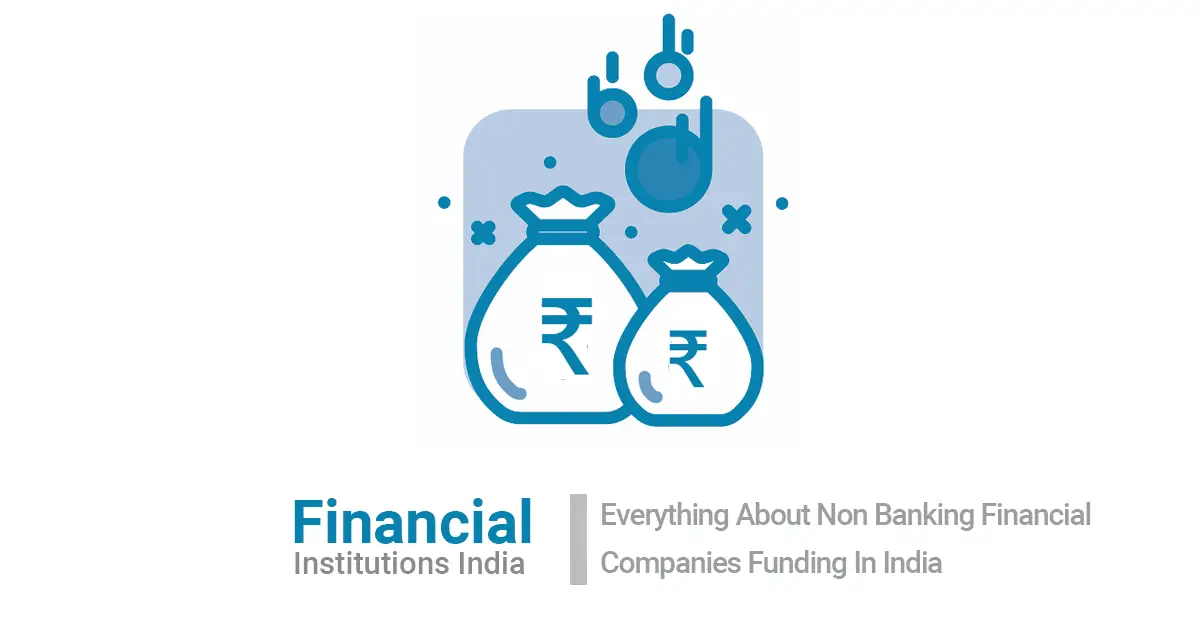Introduction: NBFC Funding
The NBFCs or the Non-Banking Financial Companies as the name itself suggests are not banking companies. They do not depend on CASA or the Current Account Savings Account deposits for raising funds. As CASA deposits are only significant for banks, wherein the banks are provided with licenses by the RBI in order to accept monies from the public. NBFCs do not have those prosperities, which means that the NBFCs need alternate sources of the money supply, which are higher than the deposits taken by banks, where the interest rate offered is between 4%-6%.
Table of Contents
--------------Blog Contact Form-------------
Unlike banks, these financial institutions lack the ability to raise funds, they end up raising funds at a higher interest rate, thereby causing the barrier rate on their funds to increase correlatively in order to sustain Net Interest Margins between 1-3%. This causes NBFCs to look for substituted strategies for the distribution of funds in order to produce a higher return (in order to take on an elevated risk pattern).
Source of Fundraising in an NBFC
BANK FINANCE TO NBFCs: Banks are allowed to cover working capital facilities along with term loans to all NBFCs registered with RBI. Between Sep 2018 and 2019, banks have funded Rs 1.9 lakh crore to the non-bank sector, growing their portfolios by nearly 40 per cent, as per the latest data of RBI.
PRIVATE EQUITY AND VENTURE CAPITAL FUNDS TO NBFC: Private equity and venture capital firms still keen on NBFC, Since banks are under the burden of high non-performing assets (NPAs), investors have started focusing on non-banking financial companies (NBFCs), and alternative banking structures such as small finance banks for deployment of funds, as they continue to eat into the share of state-run banks. The investment, according to experts, endorses the potential of the evolving financial services ecosystem in India.
Sources of Funds in an NBFCs
There are three key sources of funds looking to raise money without deposits:
- Long Term: These are through term loans acquired from banks in a single portion, after finalizing the amount of funds to be stationed in the normal course of operations of the NBFC. The benefit of doing so is that banks can generally lend at much lower rates delinquent to the nature of the CASA deposits, which favors the business model of NBFCs that have a more hostile risk-return profile. These kind of loans can be unsecured or secured through G-secs (monitored by the Treasury Department), and repayment can be done in bullet or a structured schedule. This repayment should preferably be mirrored with the repayment schedules of the assets on the balance-sheet. A good credit rating is compulsory for raising huge sums at a competitive interest rate.
- Long Term: Bonds are used as a general method to diminish the interest rate on the sources of funds. The coupon rate on the bond is chosen in order to reflect the rating profile of the NBFC as well as a return better than the G-Secs. In some cases, tax-free bonds are also issued for priority sectors such as infrastructure and roads. The maturity profiles of these bonds concur with the repayment or interest schedules of the investments made by the NBFCs. Bonds can be issued to retail investors as well, which is a prime benefit for NBFCs during bond placement.
- Short Term: Short term loans offered by a non-banking financial company can be issued by raising funds through Commercial Paper. CP’s are short term unsecured promissory notes issued by companies, with a time period of 3 to 12 months.
Measuring the Effectiveness of Fund Raising
The main points to keep in mind while raising funds are,
- Examining the mismatch between assets & liabilities;
- Reducing the mismatch.
In this case assets are defined as the investments made by way of equity or debt or structured products in the operations of an NBFC as a financing entity, while liabilities are referred to as the amount owed to parties that have supplied the monies for the financing activity. The interest rate levied between both leads to an arbitrage, thereby resulting in a Net Interest Margin. The arbitrage so created is the value derived from the capability and experience of the officials in the NBFC to identify correct segments for investment at a higher risk-reward ratio and give extra-ordinary returns in the Indian or Corporate context.
Treasury and Rupee Resources Departments
Largely, the process of taking up the money supply lies within the realm of the rupee resources department that administers long and short term instruments used within a non banking finance company to match the supply with the demand. After the resources are elevated and the funds are with the company, the Treasury department is accountable for the disposal, any asset liability variance and call or money market instruments to be determined when the funds are parked.
Major Performance Indicators in Examining Asset/Liability match in an NBFC
For the same purpose, the treasury and rupee resources departments rely on the following vital risk factors:
1. Liquidity Risk: There is a risk of an investment that cannot be marketed or sold off effortlessly to the third party, for minimizing the losses.
2. Interest Rate Risk: Risk in interest rate while elevating monies that affects the Net Interest Margin adversely, and wears down the value of the net worth of the NBFC.
3. Foreign Exchange Risk: Risk of bearing losses in detrimental exchange rate movements such as the demonetization that took place in 2016, especially during an open position, either spot or forward or a combination.
4. Equity Price Risk: There is a risk that a loss may crop up on account of public or private equity shares held in the portfolio, for the equity investments made by the NBFC. NBFCs administer and control their treasury activities on the basis of the various risks involved rather than on the basis of the particular type of financial instrument dealt with. Broad IT systems are put in place to determine these risks along with value at risk, and a suitable trim is made to the investment when needed. At all times, a chance of default and a Loss given Default is estimated, that varies with the change in the profile of the company that is invested in. The VaR method would be engaged to evaluate potential loss that could solidify the trading position or portfolio due to variations in market interest rates and prices within a defined tenure.
The variations in market interest rates have impact on the economic value on the institution’s banking balance sheet. Given the range of loan product offerings of an NBFC, it would be endeavored to determine IRR on the banking book that assesses the effects of the rate changes on both earnings and economic value. As the simplest measure, the Treasury Mid-Office may compute simple maturity gaps, re-pricing gaps and duration gaps. Taking the volume of data into consideration.
Asset Liability Committees in NBFCs
The ALCO would mainly be responsible to deal with liquidity and interest rate risk of the organization. Such committees are usually headed by the CXOs in the organization, to keep an eye on the cost they should spiral out of control and impact the profitability, especially in a down market.
Role of the ALCO:
- Balance sheet planning for suitable risk-return, and the management of interest rate and liquidity risks.
- Product pricing for loans and advances, and estimation of a base rate.
- Deciding on preferred maturity profile and mix of assets and liabilities that can be added on in the future.
- Developing a viewpoint on the interest rate and deciding on the future business strategy to contain interest rate risk.
- Reviewing the funding policy to reduce liquidity risk.
Liquidation: Treasury Ops
- The Treasury Ops are categorized into The Front, the Mid and the Back Office. The Treasury Front Office within the institution is the clearing house for matching, running and controlling market risks. It also imparts investment support for the assets and liabilities given by regular business of an NBFC. All the dealers vigorously involved in day-to-day trading activities have to hold on to FEDAI and FIMMDA and other regulatory codes of conduct. The dealers must also hold on to the Internal Stop Loss Limit.
- The back office secures compliance of transactions undertaken. Moreover, prompt settlement of all dealing accounts is an important control to ensure the exact identification of risk exposures.
- The mid office is an on-site tracking department and to give value added support to Front office activities. It acts as an independent risk monitoring functionary.
This portion of the site is for informational purposes only. The content is not legal advice. The statements and opinions are the expression of author, not corpseed, and have not been evaluated by corpseed for accuracy, completeness, or changes in the law.
BOOK A FREE CONSULTATION
Get help from an experienced legal adviser. Schedule your consultation at a time that works for you and it's absolutely FREE.









